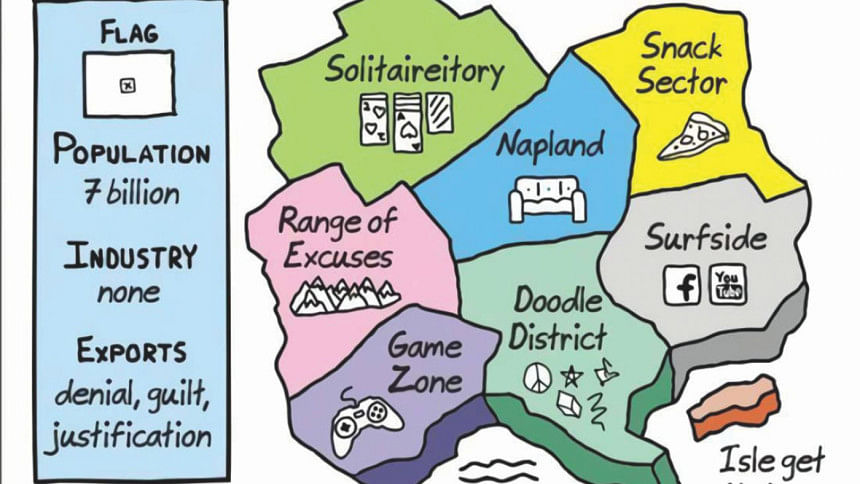Calculated Procrastination

Is it not the basic dream that you can effectively maximise the period of procrastination without having to feel like your life is going to fall apart more than a few times? That is where decision mathematics comes in.
You might wonder, why learn math when you could just continue to mindlessly avoid the work you have to do? As valid as that might seem, the aspiration isn't to just be an average Joe in the world of procrastination but to reach the stature of one master procrastinator. So, pull out a few sheets of graph paper, keep a calculator at hand (although you could do without one), all you need now is a Cascade Chart.
In any scheduled project, there are things that must be done without delay – learning the skills you need, eating, watching new episodes of your favourite TV show, sleep (maybe?). These are your critical activities: to be done immediately. The main parts of your project cannot wait. Neither can The Walking Dead.
Life, as if not difficult enough, throws in other "non-critical" activities in the mix that too must be done. Non-critical doesn't mean unimportant. It signifies that it allows for some time before it needs to get done. The amount of time you get is the "float". The more float you have, the better it is for us procrastinators.
To put it into perspective, here's an example. You need to complete a group project in a week. On the heading of your cascade diagram, chart out the number of days. Determine how many tasks you have and approximately how long each will take, like honestly estimating how many memes before actually discussing the workload.
Break them down into a web of steps which will lead to the completion of your task objective. If you draw a line between the critical steps, it will show you the quickest way to your end goal. That is your critical path. Such as: start WhatsApp group, arrange meeting, throw things together, complain about authoritarian system of schools, put the workload on the smart kid, present due project. However, not all the tasks will follow this path, like debating on what food to order.
Place those non-critical activities below the critical path between suitable intervals. Usually, or rather hopefully, the intervals are going to be longer than the duration of your non-critical tasks. Thus, you can float your duty at the back of your mind for that extra bit of time you have without affecting the deadline. In line with the above example: before the project, you could buy supplies right before the start of the project or keep it stored in your room early to get a constant reminder of your remaining tasks – either way, it works.
The Cascade Chart is a great tool for visualising your priorities (or lack thereof). It allows for a task to be completed in the least amount of time while finding loops for delays in some tasks. It's a beacon for those who must multitask and is crucial in their world, while being a planned schedule for squeezing in one more episode of the latest TV hit for the rest.

 For all latest news, follow The Daily Star's Google News channel.
For all latest news, follow The Daily Star's Google News channel. 



Comments